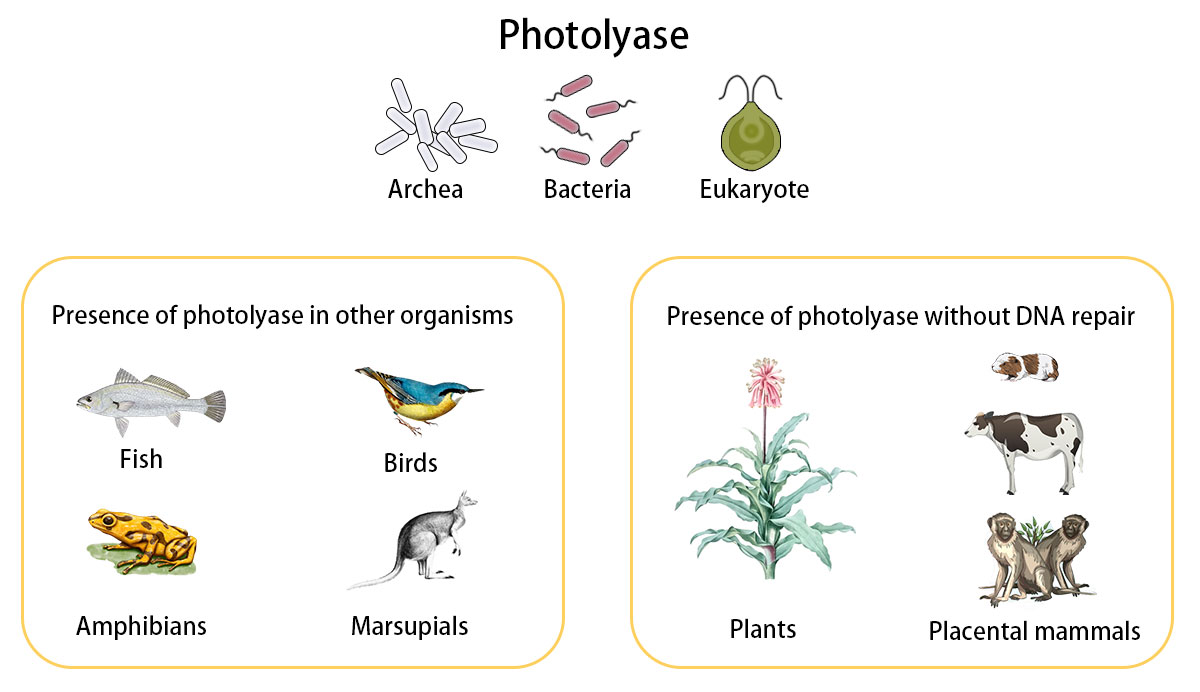Photosomes-based Drug Delivery Service
Creative Biolabs can provide customized LDD (Lipid-based Drug Delivery) formulation and drug delivery services by advanced liposome development platform for your projects. Here we offer a full range of photosomes-based drug delivery services for drug delivery and disease treatment. With extensive experience in delivery systems, our professional scientists are dedicated to providing high-quality services to promote the development of innovative immune disease treatments.
Introduction
Human skin is sensitive to solar ultraviolet radiations (UV). UV is considered as an environmental genotoxic agent and causes cellular DNA damage within skin cells. To protect themselves, cells have a variety of DNA repair mechanisms. Many organisms have specific enzymes such as the photolyases, which can bind to the lesion and reverse the damage with the energy of light by photoreactivation. They exist in everything from bacteria to multicellular eukaryotes, but not in human although recent studies have shown photorepair in humans. To date, the photosomes is photolyase in multilamellar liposomes, prepared from photosynthetic plankton called Anacystis nidulans. Photolyases are monomeric flavoproteins of 50-60 kDa and have two chromophores as cofactors. The enzymatic unit recognizes the lesion in a light-independent process. The specificity is decided by the backbone structure of DNA at the binding site and by the chemical structure of the photolesion. During the repairing, the enzyme splits the cyclobutane ring, a back electron transfer restores the pyrimidines and the flavin is regenerated for a new cycle of catalysis.
 Fig.1 Presence of photolyase in different organisms. Due to evolution, some species lost the ability to repair DNA1.
Fig.1 Presence of photolyase in different organisms. Due to evolution, some species lost the ability to repair DNA1.
Photosomes-based Drug Delivery
Photosomes are artificial spherical submicroscopic vesicles with diameter between 25 and 5000 nm. They are composed of amphiphilic molecules with core that composed of an aqueous cavity, which is encapsulated by one or more bimolecular phospholipid sheets separated from each other by aqueous layers. Photosomes harbor the enzyme photolysase encapsulated in a liposome structure and are incorporated in sun-care product to protect the sun-exposed skin by releasing a photo-reactivating enzyme extracted from the marine plant, Anacystis nidulans. This enzyme can be activated by light and can work during the day to facilitate the skin DNA repair process. Combined with ultrasomes, they present the "intelligent" DNA repair system and are the most widely used in cosmetic delivery systems and photodynamic therapy.
 Fig.2 DNA repair by photolyase1.
Fig.2 DNA repair by photolyase1.
Features of Our Photosomes-based Drug Delivery
-
State-of-the-art platform
-
Professional scientist
-
Timely and highly efficient
-
Cost-effective
Creative Biolabs is specialized in the drug delivery system design and preparation that are suitable for a number of disease therapy and detection. Our high-quality photosomes-based drug delivery services may help the administration of drugs and the therapy of diseases for our worldwide clients. Moreover, we offer customized LDD formulation for our customers to meet every specific research requirement. Please contact us to experience the value of our expert services.
References
-
Ramírez-Gamboa, Diana, et al. "Photolyase production and current applications: a review." Molecules 27.18 (2022): 5998.

For Research Use Only. Not For Clinical Use

 Fig.1 Presence of photolyase in different organisms. Due to evolution, some species lost the ability to repair DNA1.
Fig.1 Presence of photolyase in different organisms. Due to evolution, some species lost the ability to repair DNA1.
 Fig.2 DNA repair by photolyase1.
Fig.2 DNA repair by photolyase1.
 For Research Use Only. Not For Clinical Use
For Research Use Only. Not For Clinical Use